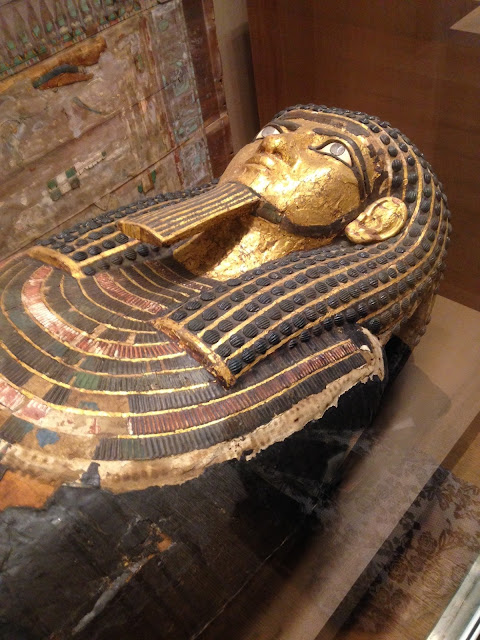Day 402 - !7th century Spanish portraiture
February 21, 2025
The wall sign that introduces Gallery 625 bears the title “Power and Portraiture in Spain,” but it might equally well be called “Velasquez and Portraiture.” Velasquez painted four or five of the ten portraits hung in this room. (One attribution is questionable.) Two others are by Juan Bautista Martinez del Mazo, Velasquez’ son-in-law and assistant, who imitated his father-in-law in his methods, and two are by Murillo, who, the signage says, was also influenced by Velasquez The final portrait, by Sebastiano del Piombo, is supposedly of Columbus (but, according to the placard, its date, after Columbus’ death, suggests that del Piombo may have painted Columbus’ son instead). This work looks nothing at all like the portraits of the Spanish painters, but it does illustrate the general principle that it was wealthy and important people who had their portraits painted. Painted and repainted, actually, since images were copied for use as diplomatic gifts, to let potential suitors know what their prospective spouses looked like, and generally to convey a sense of a ruler’s reach and power.
The signage tells me to pay attention to Velasquez’ loose brushwork and to the broken outlines that animate the paintings’ surfaces. But what I find myself noticing are the details that strike me as amusing. In a full-length Murillo portrait of a knight that measures approximately eight feet high and four feet wide, what I take note of is the subject’s luxuriantly full head of hair and the fact that in his left hand he holds a bag made of the same fabric as the sleeves of his shirt. Quite the dandy. And in a smaller (about 66 inches high and 48 inches wide) standing portrait of the seven-year-old princess Maria Theresa that Mazo painted around 1645, I’m impressed by the lively face of the little dog she reaches to pet on the chair behind her. It looks like a long-haired chihuahua, though I suspect it’s another breed. The young princess, who has red hair just like her dad, Philip IV, in Velasquez’ portrait, must have been very hot and uncomfortable in what appears to be a dress of black crushed velvet with lace cuffs and collar and paillettes at the hem. How in the world was this garment washed, I wonder? Or maybe it wasn't - she just wore it until she outgrew it.





Comments
Post a Comment